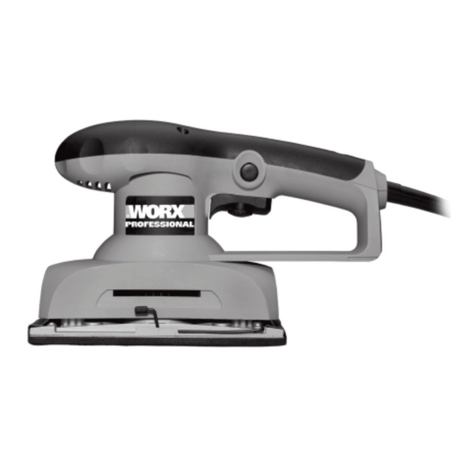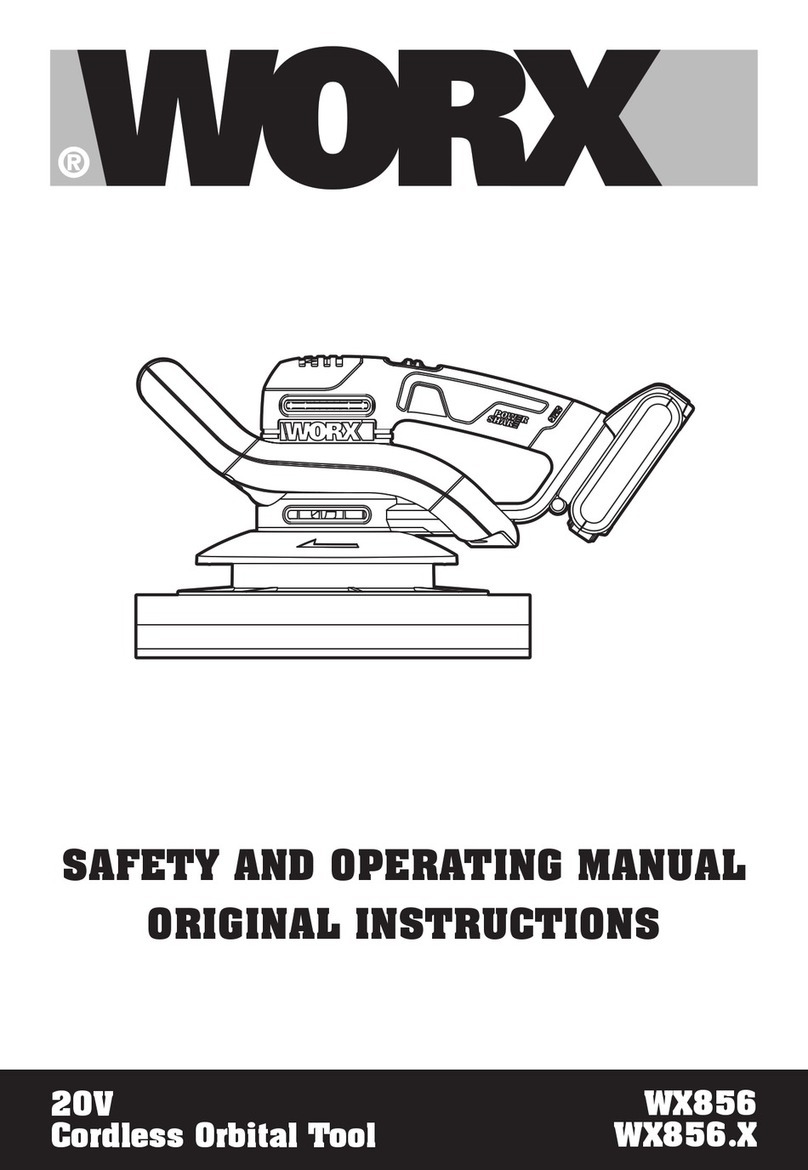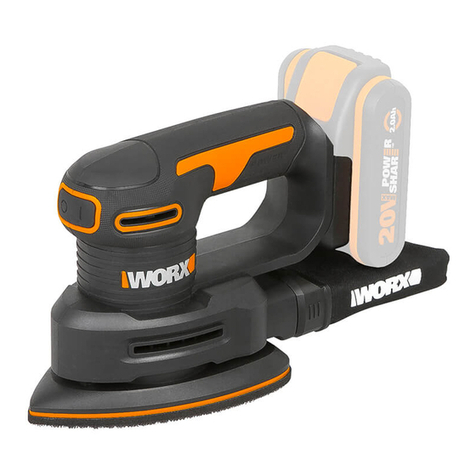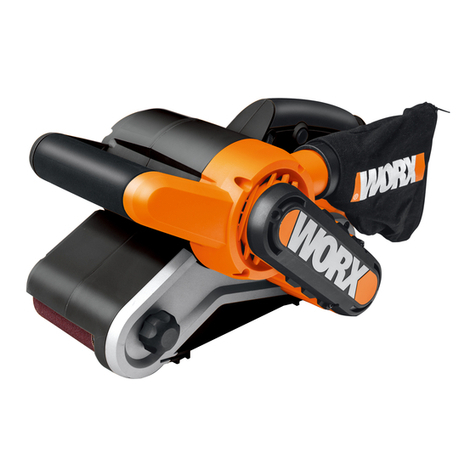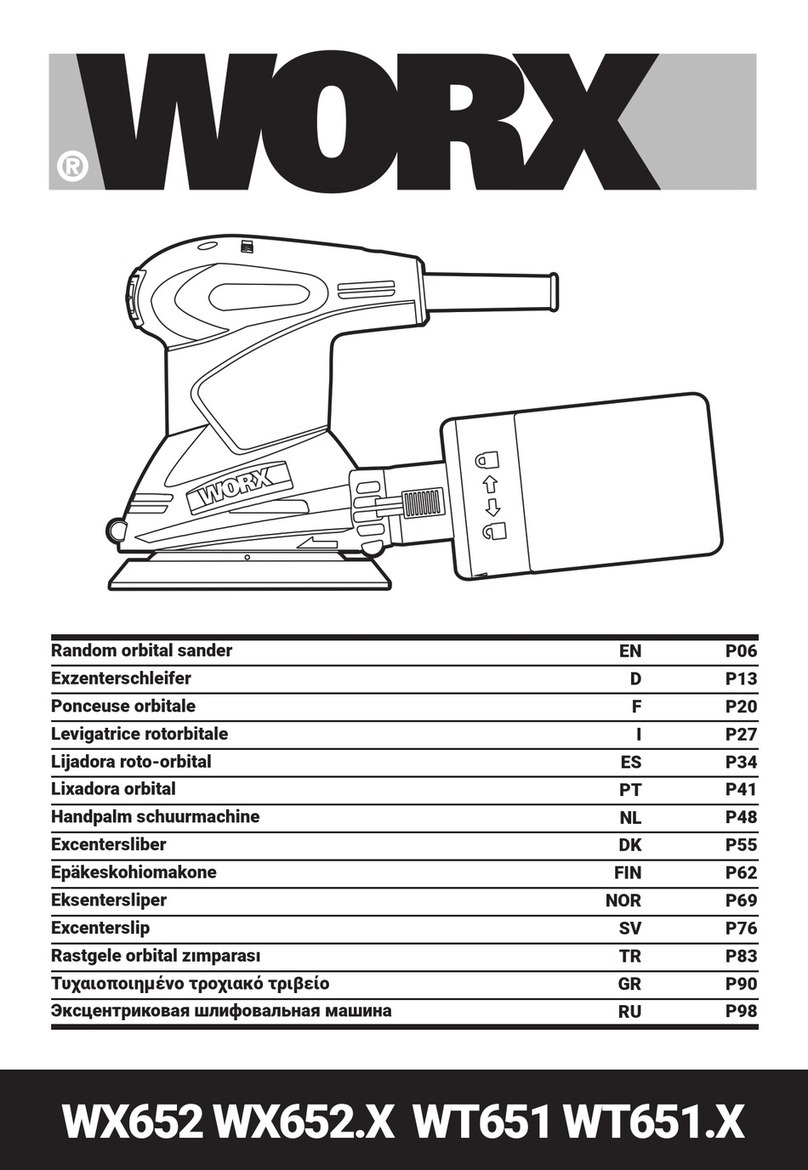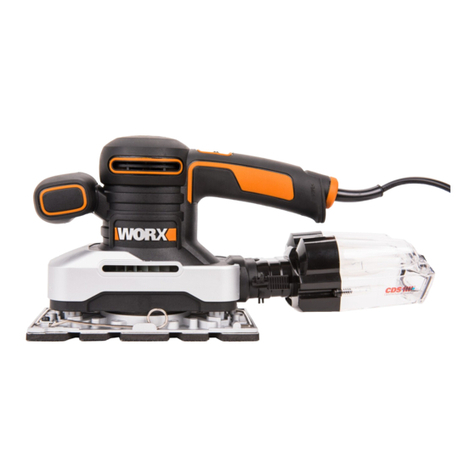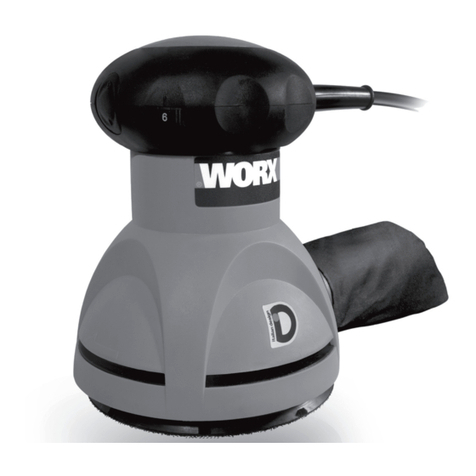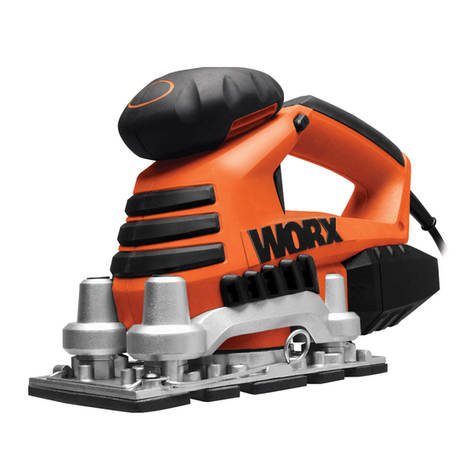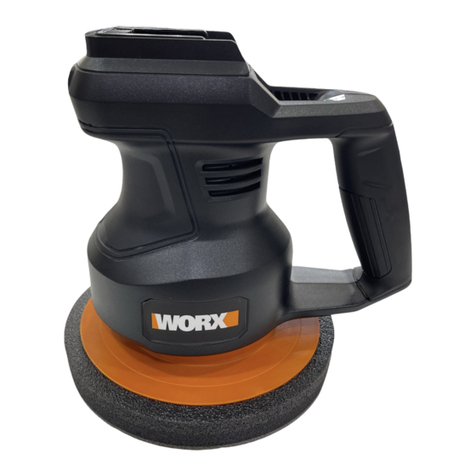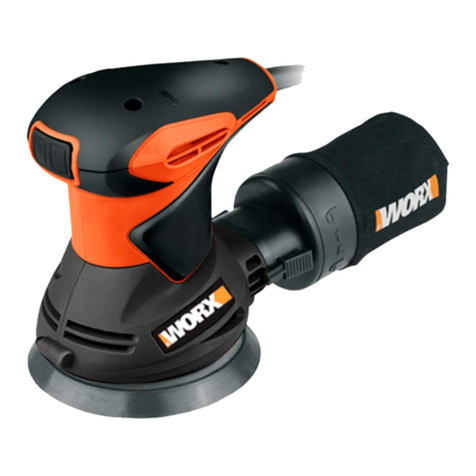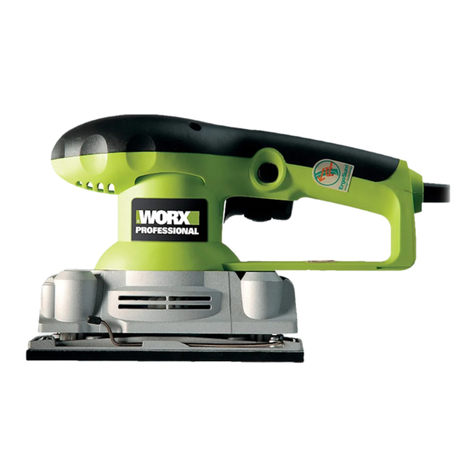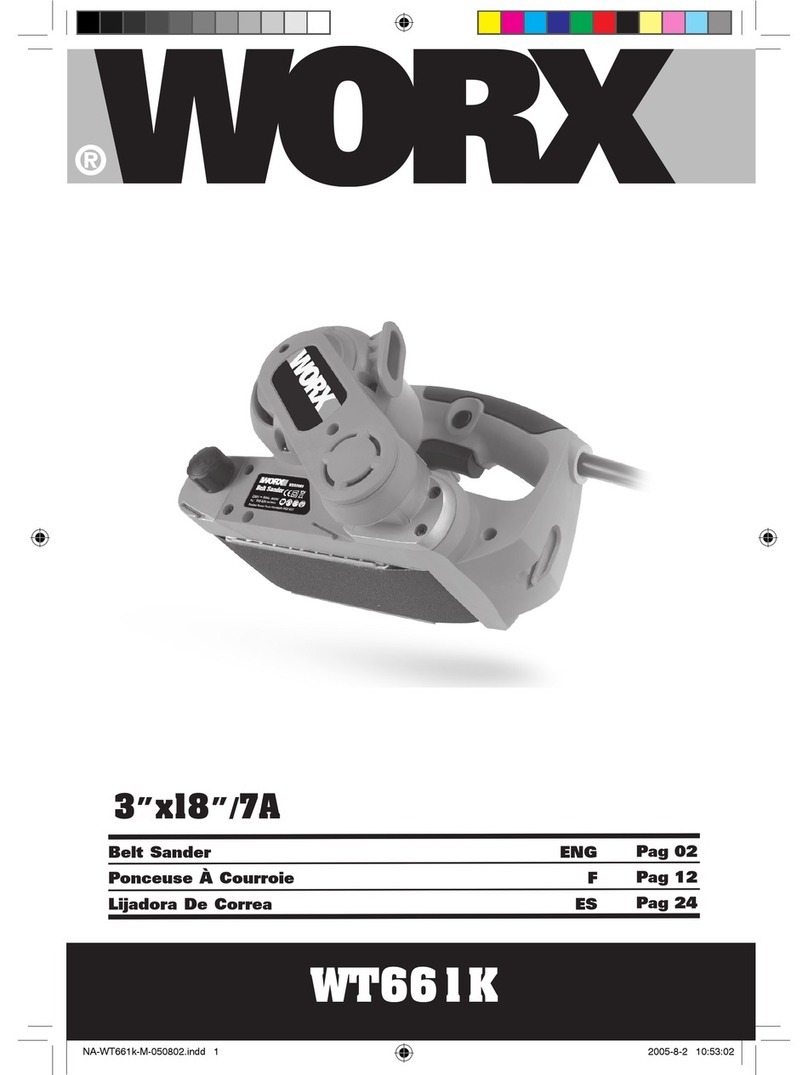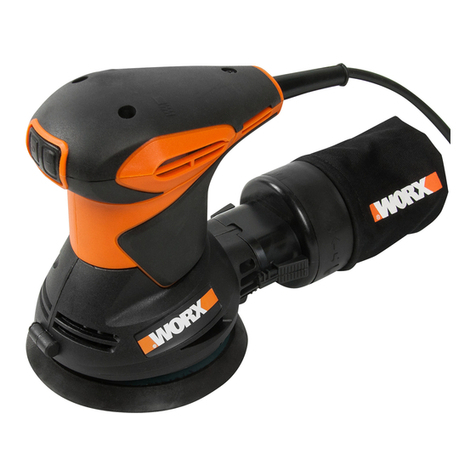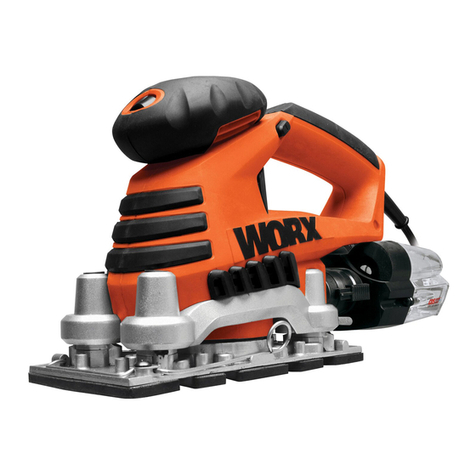
9
Random orbit sander EN
WORKING HINTS FOR YOUR
SANDER
If your power tool becomes too hot, especially when
used at low speed, set the speed to maximum and run
it with no load for 2-3 minutes to cool the motor. Avoid
prolonged usage at very low speeds. Always use sand
paper that is suitable for the material you want to sand.
Always ensure the work-piece is firmly held or clamped
to prevent movement.
Any movement of the material may affect the quality of
the sanding finish.
Start your sander before sanding and turn it off only
after you stop sanding. For the best results, sand wood
in the direction of the grain.
Do not start sanding without having the sandpaper
fitted.
Do not allow the sand paper to wear away it will
damage the base-plate.The guarantee does not cover
base-plate wear and tear.
Use coarse grit paper to sand rough surfaces, medium
grit for smooth surfaces and fine grit for the final
surfaces. If necessary, first make a test run on scrap
material.
Use only good quality sand paper.
The sand paper controls the sanding efficiency, not
the amount of force you apply to the tool. Excessive
force will reduce the sanding efficiency and cause
motor overload. Replacing the sand paper regularly will
maintain optimum sanding efficiency.
An integrated sanding plate brake reduces the speed
when running at no load so that scoring is avoided when
placing the machine on the work piece. A continuously
increasing no-load speed over the course of time
indicates that the sanding plate brake is worn and must
be replaced by an authorized customer service location.
MAINTAIN TOOLS WITH CARE
Remove the plug from the socket before carrying out
any adjustment, servicing or maintenance.
Your power tool requires no additional lubrication or
maintenance.There are no user serviceable parts in
your power tool. Never use water or chemical cleaners
to clean your power tool. Wipe clean with a dry cloth.
Always store your power tool in a dry place. Keep
the motor ventilation slots clean. Keep all working
controls free of dust. Occasionally you may see sparks
through the ventilation slots.This is normal. If the
supply cord is damaged, it must be replaced by the
manufacturer, its service agent or similarly qualified
persons in order to avoid a hazard.
ENVIRONMENTAL
PROTECTION
Waste electrical products must not be
disposed of with household waste. Please
recycle where facilities exist. Check with your
local authorities or retailer for recycling advice.
PLUG REPLACEMENT (ONLY
FOR REWIRABLE PLUG OF UK
& IRELAND)
If you need to replace the fitted plug then follow the
instructions below.
IMPORTANT
The wires in the mains lead are colored in
accordance with the following code:
BLUE = NEUTRAL
Brown = Live
As the colors of the wires in the mains lead of this
appliance may not correspond with the colored
markings identifying the terminals in your plug,
proceed as follows.The wire which is colored blue
must be connected to the terminal which is marked
with N.The wire which is colored brown must be
connected to the terminal which is marked with L.
WARNING! Never connect live or neutral wires to
the earth terminal of the plug. Only fit an approved
13ABS1363/A plug and the correct rated fuse.
NOTE: If a moulded plug is fitted and has to be
removed take great care in disposing of the plug
and severed cable, it must be destroyed to prevent
engaging into a socket.
Connect
Blue to N
(neutral)
Outer sleeve
firmly clamped
Cable grip
Brown L (live)
13 Amp fuse approved
to BS1362

